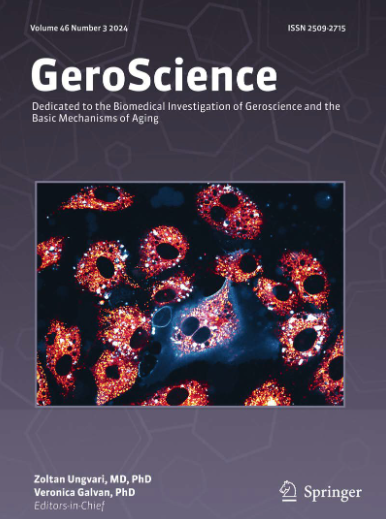集成年龄:加强与多时钟框架的表观遗传年龄评估。
IF 5.4
2区 医学
Q1 GERIATRICS & GERONTOLOGY
引用次数: 0
摘要
已经为老鼠和其他物种开发了几种广泛使用的表观遗传时钟,但一个持久的挑战仍然存在:不同的老鼠时钟往往产生不一致的结果。为了解决鲁棒性的这种限制,我们提出了EnsembleAge,一套基于集成的表观遗传时钟。利用来自多个组织的200多个扰动实验的数据,EnsembleAge集成了来自多个惩罚模型的预测。实证评估表明,在检测促衰老和恢复活力的干预措施方面,EnsembleAge优于现有的时钟。此外,我们还介绍了EnsembleAge HumanMouse,这是一个扩展,可以进行跨物种分析,促进小鼠模型和人类研究之间的转化研究。总之,这些进展强调了EnsembleAge作为识别和验证调节生物衰老干预措施的强大工具的潜力。本文章由计算机程序翻译,如有差异,请以英文原文为准。
EnsembleAge: enhancing epigenetic age assessment with a multi-clock framework.
Several widely used epigenetic clocks have been developed for mice and other species, but a persistent challenge remains: different mouse clocks often yield inconsistent results. To address this limitation in robustness, we present EnsembleAge, a suite of ensemble-based epigenetic clocks. Leveraging data from over 200 perturbation experiments across multiple tissues, EnsembleAge integrates predictions from multiple penalized models. Empirical evaluations demonstrate that EnsembleAge outperforms existing clocks in detecting both pro-aging and rejuvenating interventions. Furthermore, we introduce EnsembleAge HumanMouse, an extension that enables cross-species analyses, facilitating translational research between mouse models and human studies. Together, these advances underscore the potential of EnsembleAge as a robust tool for identifying and validating interventions that modulate biological aging.
求助全文
通过发布文献求助,成功后即可免费获取论文全文。
去求助
来源期刊

GeroScience
Medicine-Complementary and Alternative Medicine
CiteScore
10.50
自引率
5.40%
发文量
182
期刊介绍:
GeroScience is a bi-monthly, international, peer-reviewed journal that publishes articles related to research in the biology of aging and research on biomedical applications that impact aging. The scope of articles to be considered include evolutionary biology, biophysics, genetics, genomics, proteomics, molecular biology, cell biology, biochemistry, endocrinology, immunology, physiology, pharmacology, neuroscience, and psychology.
 求助内容:
求助内容: 应助结果提醒方式:
应助结果提醒方式:


